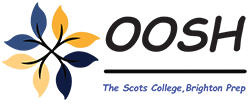Science Week.
What Absorbs More Heat?

When you’re out in the sun on a hot summers day it pays to wear some light colored clothes, but why is that? Experiment with light, color, heat and some water to find out.
What you’ll need:
- 2 identical drinking glasses or jars
- Water
- Thermometer
- 2 elastic bands or some sellotape
- White paper
- Black paper
Instructions:
- Wrap the white paper around one of the glasses using an elastic band or sellotape to hold it on.
- Do the same with the black paper and the other glass.
- Fill the glasses with the exact same amount of water.
- Leave the glasses out in the sun for a couple of hours before returning to measure the temperature of the water in each.
What’s happening?
Dark surfaces such as the black paper absorb more light and heat than the lighter ones such as the white paper. After measuring the temperatures of the water, the glass with the black paper around it should be hotter than the other. Lighter surfaces reflect more light, that’s why people where lighter colored clothes in the summer, it keeps them cooler.
How Plants Grow

Learn about how plants grow by experimenting with this interactive science activity. Using heat & water, see if you can make the plant grow to a healthy size. Too much sun & moisture can have a negative effect on the plant though so be careful when giving it nutrients. Keep the amounts in balance and see how long you can keep the plant growing healthily. Experiment with different conditions, what does closing the blinds and removing the sunlight do? What happens if you forget to water the plant or add too much water? How about if the conditions become too hot or too cold? Can you take care of the plant for 4 weeks? Take up the challenge and give it a try. This fun, educational game is perfect for kids.
Capital Cities Quiz
Take our capital cities quiz for kids and have fun testing your knowledge of capital cities from around the world. The questions are split into easy, medium and hard so you can tackle the ones you feel comfortable with or challenge yourself to give them all a try!
| EASY | MEDIUM | HARD |
| 1. Italy? | 11. Sweden? | 21. Belgium? |
| 2. United States? | 12. Australia? | 22. Jamaica? |
| 3. Greece? | 13. Wales? | 23. Venezuela? |
| 4. France? | 14. Argentina? | 24. Morocco? |
| 5. Egypt? | 15. Iraq? | 25. Bangladesh? |
| 6. Spain? | 16. South Korea? | 26. Ukraine? |
| 7. Japan? | 17. Mexico? | 27. Kenya? |
| 8. England? | 18. Ireland? | 28. Portugal? |
| 9. Thailand? | 19. Canada? | 29. Vietnam? |
| 10. Russia? | 20. Brazil? | 30. Fiji? |
| EASY | MEDIUM | HARD |
| 1. Italy? Rome | 11. Sweden? Stockholm | 21. Belgium? Brussels |
| 2. United States? Washington D.C. | 12. Australia? Canberra | 22. Jamaica? Kingston |
| 3. Greece? Athens | 13. Wales? Cardiff | 23. Venezuela? Caracas |
| 4. France? Paris | 14. Argentina? Buenos Aires | 24. Morocco? Rabat |
| 5. Egypt? Cairo | 15. Iraq? Baghdad | 25. Bangladesh? Dhaka |
| 6. Spain? Madrid | 16. South Korea? Seoul | 26. Ukraine? Kiev |
| 7. Japan? Tokyo | 17. Mexico? Mexico City | 27. Kenya? Nairobi |
| 8. England? London | 18. Ireland? Dublin | 28. Portugal? Lisbon |
| 9. Thailand? Bangkok | 19. Canada? Ottawa | 29. Vietnam? Hanoi |
| 10. Russia? Moscow | 20. Brazil? Brasilia | 30. Fiji? Suva |
Learning Outcomes:
1 Children have a strong sense of identity- Children develop knowledgeable and confident self-identities
2 Children are connected with and contribute to their world- Children respond to diversity with respect
3 Children have a strong sense of well being- Children become strong in their social and emotional well being
4 Children are confident and involved learners- Children develop a range of skills and processes such as problem solving, enquiry, experimentation, hypothesising, researching and investigating.
5 Children are effective communicators- Children engage with a range of texts and gain meaning from these texts.
